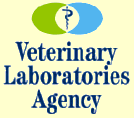



UK Cattle Disease Quarterly Surveillance Report (to June 2007)
By Veterinary Laboratories Agency - This report monitors trends in the major endemic cattle diseases. The report is compiled using disease data gathered by the network of VLA Regional Laboratories.
 April – June, 2007 Published August 2007 Contents OVERVIEW (here) Cattle Diagnostic Submissions Farm Visits Salmonellosis Food Safety Incidents Johne’s Disease Bovine Viral Diarrhoea (BVDV) Fasciolosis Cryptosporidiosis Infectious Bovine Rhinotracheitis Scanning Surveillance for New And Emerging Disease |
OVERVIEW
Factors Influencing Bovine Disease SurveillanceEconomic
The mean price of finished beef cattle was very similar to that in the previous quarter and for the same months of 2006 (weekly mean was 208 p/kg deadweight). The mean price of store cattle was higher than that of the first quarter of 2007 and of the second quarter of 2006 (£490 vs. £465 and £460 per head respectively).
In the dairy sector, the mean milk price paid to farmers remained very similar to the previous quarter (.17.7 pence per litre) but the spot price of milk has increased significantly. This is likely to be reflected in prices paid to dairy farmers in future annual contracts. The mean price of dairy cows was £787, an increase from £737 in the last quarter and from £726 in the second quarter of 2006. This reflects the likely increased demand for, and potential undersupply of, milk and dairy products resulting from the wet weather of early summer (see below), reduced world production and increased world demand. Increased dairy farm income would have an affect on management and disease risks, as well as ability to pay for veterinary and preventive medicine interventions. These changes will be monitored and reported in future Quarterly reports. Increased income would be expected to enable greater outlay on inputs, but there has also been a very great rise in feed wheat price (from about 70 to 120 £/tonne over the past 12 months) which is likely to be reflected in increased cost of purchased concentrate feed.
Weather
Weather patterns in this quarter were very unusual, with very little rain and high temperatures in April. However, May and June the situation was reversed with rain and close to normal temperatures.
|
Fig. 1 |
||||||
| Rainfall and temeparatures for England and Wales |
April |
May |
June |
|||
|---|---|---|---|---|---|---|
| Actual | Variance on LTA* | Actual | Variance on LTA* | Actual | Variance on LTA* | |
| Mean temperature (ºC) | 10.8 | +3.5 | 11.6 | +1.1 | 14.6 | +1.1 |
| Rainfall (mm) | 12.3 | 21% | 110.5 | 174% | 144.3 | 227% |
| * long-term average Source – Meteorological Offcie |
||||||
This would have resulted in slow grass growth early in the season and adverse conditions for silage and hay making in May and June. This has resulted in many farms having made little conserved grass (by late July) with likely poor nutritional quality of that which has been made. Furthermore, the risk of soil contamination of silage, and associated increased risk of subsequent listeriosis is high this year.
Straw bedding will also be in short supply, increasing the risk of faeco-oral spread of pathogens in straw-based cattle houses this winter.
Other
We are not aware of health-related initiatives that are likely to have influenced submissions this quarter.
Further Reading
|
|
- You can view the full article by clicking here. |
August 2007


